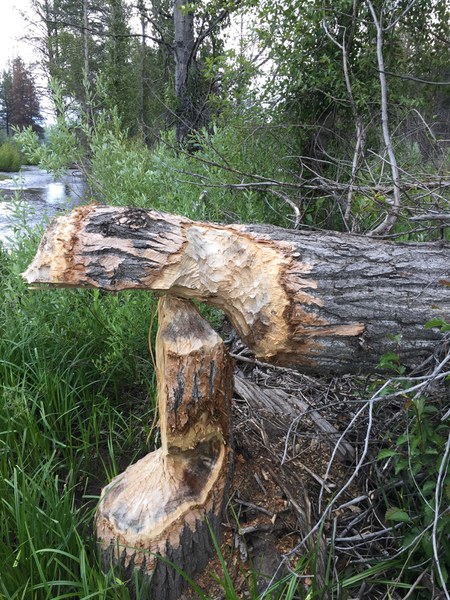
Beavers actually change their landscape impacting physical and biological conditions that have a cascading impact on all parts of our natural world. For example, beaver dams slow down the movement of water within a creek or river. As water is forced to spread out, up, or down, it creates wetlands, side channels, and ponds. Slower water helps slow bank erosion and settles sediment in the bottom of ponds instead of washing it downstream where it is detrimental to water quality. Beaver ponds also help store water and replenish groundwater which can help mitigate the effects of drought. Finally, as beaver ponds continue to mature they store carbon (great for climate change!) and filter pollutants from the water (great for water quality!).
As beavers change the land and water around them, they increase the complexity of natural areas and create habitat for a variety of fish and wildlife. Salmon and trout find shelter from predators and winter weather in the deep water habitat of beaver wetlands. Young salmon grown in beaver created side channels. Waterfowl will use beaver ponds to nest and rear their young. River otter, elk, and deer visit the abundance of new streamside plants that surround beaver dammed waters.
Today there are an estimated 10-15 million beaver in North America. Many natural areas have existed for many years in the absence of beavers and their myriad of benefits. As we prepare to adapt to a changing climate and look to continue to protect the lands Central Oregon needs for the future, the Land Trust is looking to the ecological knowledge of the beaver. We know that beavers are our true allies in restoration and we look forward to learning more from them as care for our lands in to the future.
Learn more:
- Mimicking beavers to help restore Whychus Creek
- Beaver dams at Camp Polk Meadow Preserve.
- About the habitat benefits of beavers.
Sources:
- The Beaver Believers
- What role do beavers play in climate change?
- Role of beaver in stream ecosystems
- Alteration of stream temperature by natural and artificial beaver dams
- Ecosystem experiment reveals benefits of natural and simulated beaver dams to a threaten population of steelhead
- How coastal beavers help salmon recovery
- The North American Beaver


